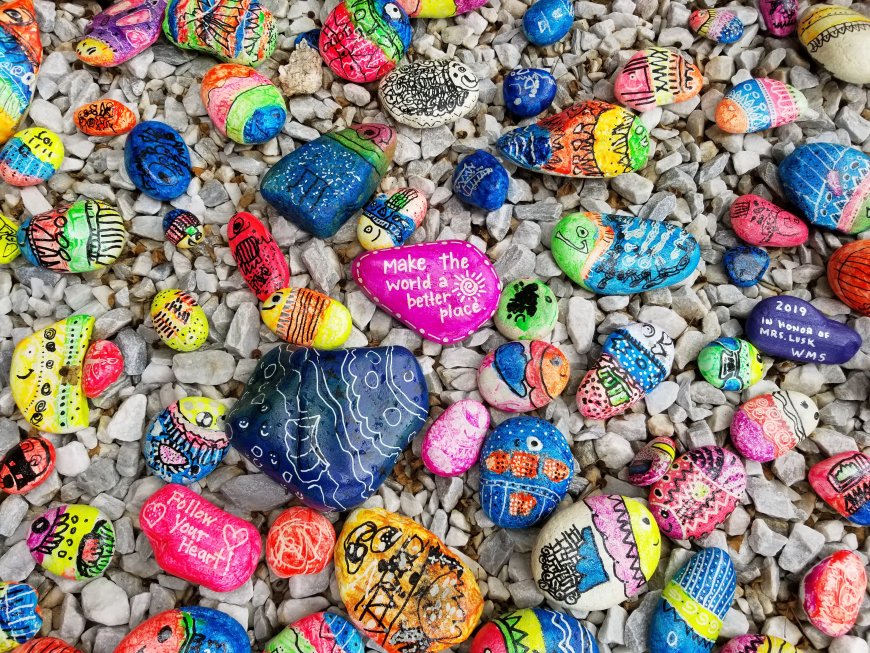Geology and Its Wonders - A Guide for Kids
Our planet Earth is an amazing place, filled with countless wonders and mysteries. In this article, we'll dive into the world of geology, the study of Earth's structure, processes, and history. From the innermost layers of our planet to the spectacular natural phenomena happening on the surface, let's embark on an exciting journey to uncover the secrets of Earth's geology!

Earth's Mysterious Science: Geology and Its Wonders for Kids
Our planet Earth is an amazing place, filled with countless wonders and mysteries. In this article, we'll dive into the world of geology, the study of Earth's structure, processes, and history. From the innermost layers of our planet to the spectacular natural phenomena happening on the surface, let's embark on an exciting journey to uncover the secrets of Earth's geology!
Exploring Earth's Layers: A Journey to the Center of the Planet
Earth is made up of several layers, each with its unique composition and characteristics. Let's travel from the surface to the center of our planet and discover what lies beneath:
-
Crust: The Earth's crust is the outermost layer, where we live. It's a thin, solid shell made of rocks and minerals. There are two types of crust: continental crust, which forms landmasses and is thicker, and oceanic crust, which lies beneath the oceans and is thinner.
-
Mantle: The mantle lies below the crust and is Earth's thickest layer, made up of solid rock that flows slowly. This flowing rock causes the tectonic plates on the surface to move, leading to earthquakes and volcanic eruptions.
-
Outer Core: Deeper inside the Earth, we encounter the outer core, a layer of molten (liquid) metal, mainly iron and nickel. The movement of this liquid metal generates Earth's magnetic field.
-
Inner Core: At the very center of our planet, we find the inner core. This solid sphere is made mostly of iron and is incredibly hot – even hotter than the surface of the Sun!
Plate Tectonics: The Driving Force Behind Earth's Mysteries
One of the most fascinating aspects of geology is plate tectonics, the movement of Earth's crust in large pieces called tectonic plates. These plates float on the partially molten rock of the mantle, and their movement can cause some of the most awe-inspiring natural events, such as:
-
Volcanoes: When tectonic plates move apart or collide, magma (molten rock) can rise to the surface, forming a volcano. Volcanoes can be found on land and underwater, and they can create new land, like the Hawaiian Islands.
-
Earthquakes: When tectonic plates grind against each other, they can cause the ground to shake, creating an earthquake. Earthquakes can be powerful and sometimes cause significant damage to buildings and infrastructure.
-
Mountain Ranges: When tectonic plates collide, they can push the Earth's crust upward, forming mountains. Some of the world's most famous mountain ranges, like the Himalayas and the Andes, were formed by this process.
Fossils: A Window Into Earth's Ancient Past
Fossils are the remains or traces of ancient plants and animals preserved in rocks. They provide a glimpse into Earth's history, giving us valuable information about the creatures that once inhabited our planet and the environments they lived in. Fossils can show us how life on Earth has evolved over millions of years, and they can even help us understand how some species became extinct, like the dinosaurs.
Rocks and Minerals: The Building Blocks of Our Planet
Rocks and minerals are the foundation of our Earth's geology. There are three main types of rocks:
-
Igneous Rocks: These rocks form when magma cools and solidifies, either beneath the surface (intrusive) or on the surface (extrusive). Examples include granite and basalt.
-
Sedimentary Rocks: Formed from the accumulation of sediments, like sand, mud, or the remains of plants and animals. Over time, these sediments become compacted and harden into rock. Examples include sandstone and limestone.
-
Metamorphic Rocks: These rocks start as igneous, sedimentary, or other metamorphic rocks but change under heat and pressure deep within Earth's crust. Examples include marble and slate.
Minerals are naturally occurring inorganic substances with a specific chemical composition and crystal structure. They are the building blocks of rocks and have various usesin our daily lives, from making jewelry and electronics to construction materials and even toothpaste!
The Wonders of Geological Processes: Caves, Canyons, and Waterfalls
Our Earth's geology has created some truly awe-inspiring natural features. Let's explore a few of them:
-
Caves: Caves are underground spaces formed by the weathering of rocks, usually limestone. Over time, water dissolves the rock, creating hollow spaces and intricate formations like stalactites and stalagmites.
-
Canyons: Canyons are deep, narrow valleys with steep sides, often carved by rivers over millions of years. The flowing water erodes the rock, gradually creating a beautiful and dramatic landscape.
-
Waterfalls: Waterfalls occur when a river or stream flows over a steep drop, often at the edge of a plateau or along a fault line. The powerful force of the falling water can carve out a plunge pool and create mesmerizing natural wonders.
Conclusion: Unlocking Earth's Geological Mysteries
Geology is an exciting field that helps us understand the mysteries of our Earth's formation, structure, and history. By studying geology, we can appreciate the incredible forces and processes that have shaped our planet and continue to do so today. From the movement of tectonic plates to the wonders of rocks and minerals, Earth's geology offers endless opportunities for kids aged 8-12 to explore, learn, and be inspired by our planet's fascinating story.
Disclaimer: The image(s) featured in this article are for illustrative purposes only and may not directly depict the specific concepts, situations, or individuals discussed in the content. Their purpose is to enhance the reader's understanding and visual experience. Please do not interpret the images as literal representations of the topics addressed.
What's Your Reaction?












































































































